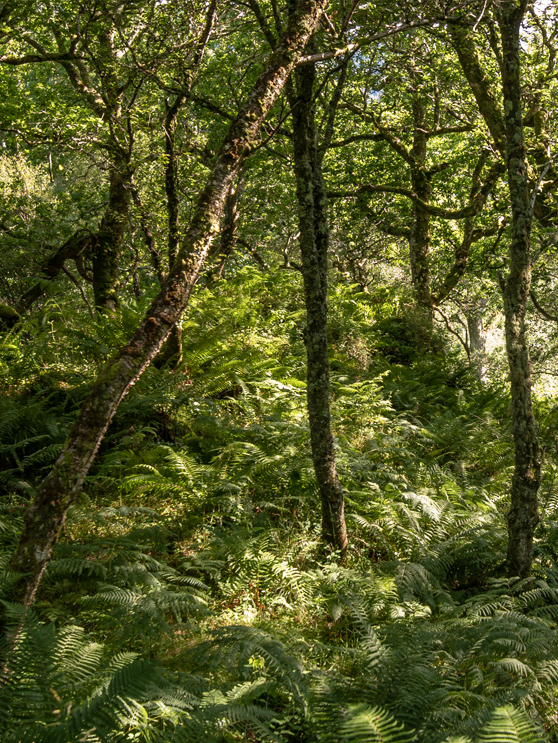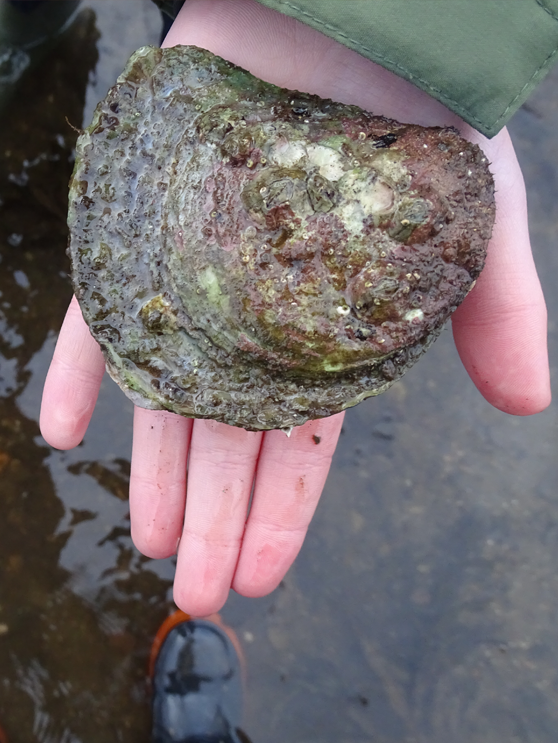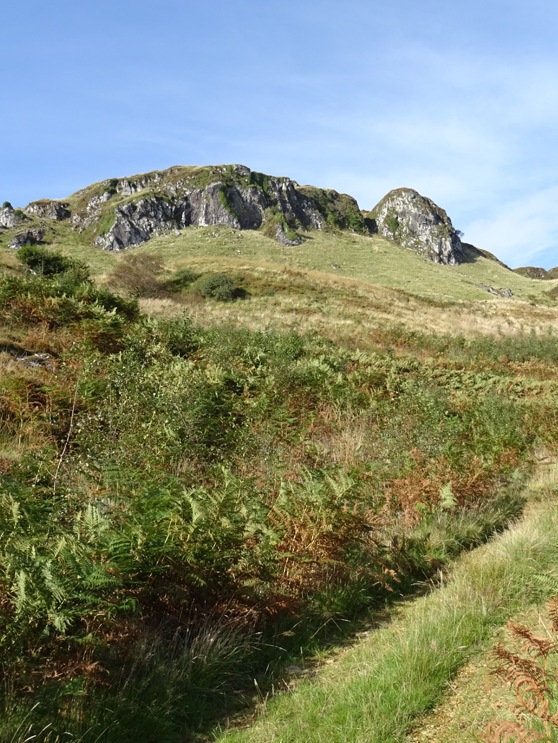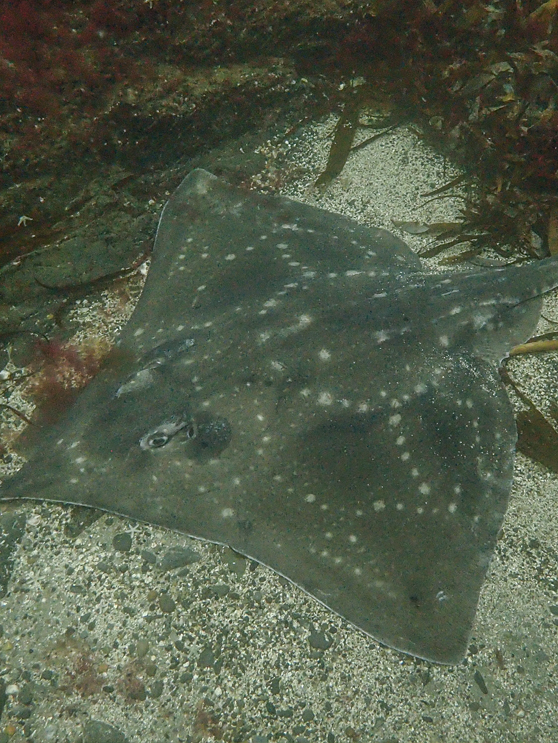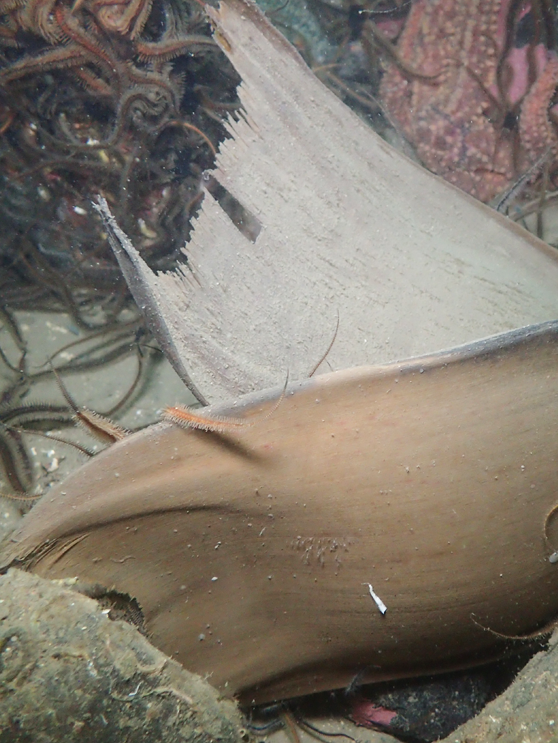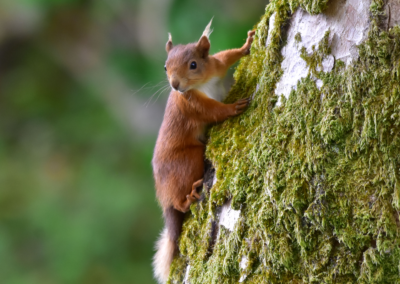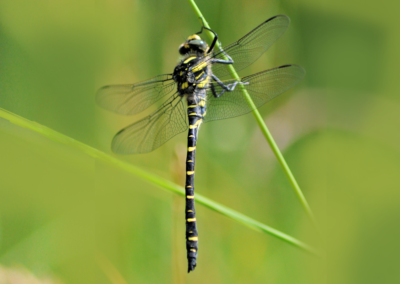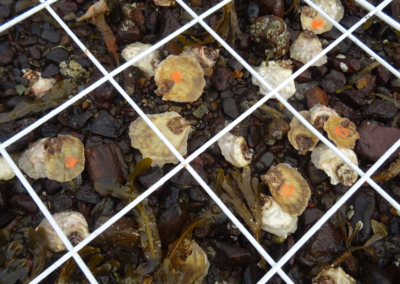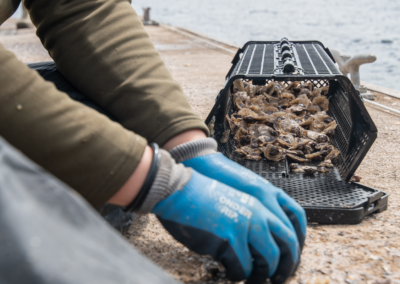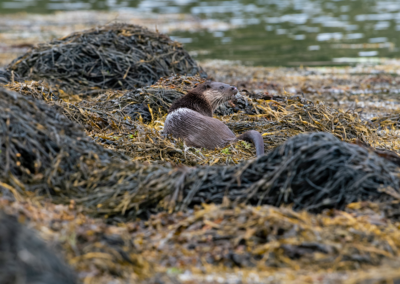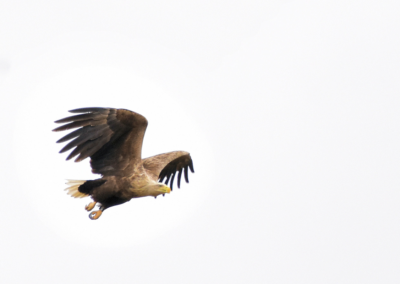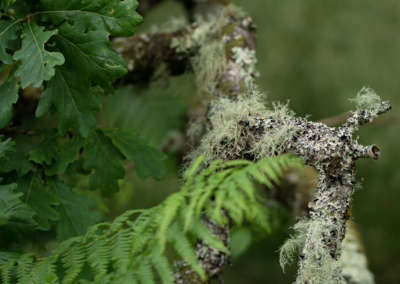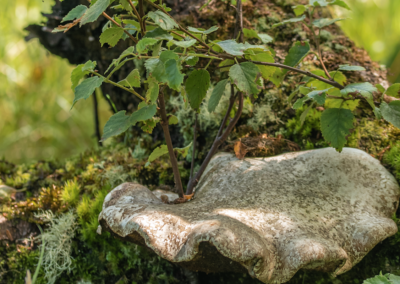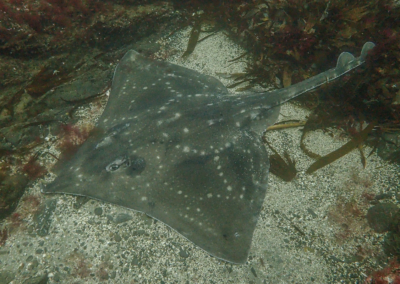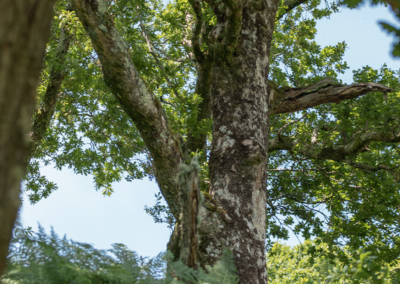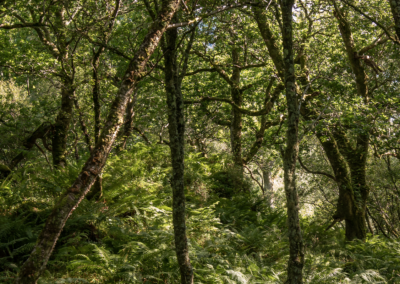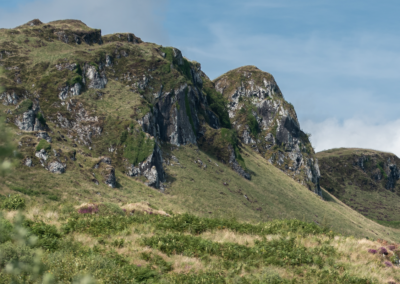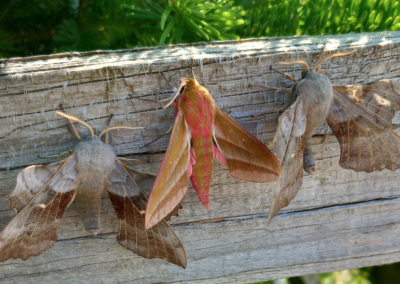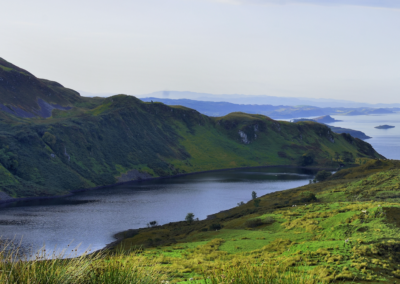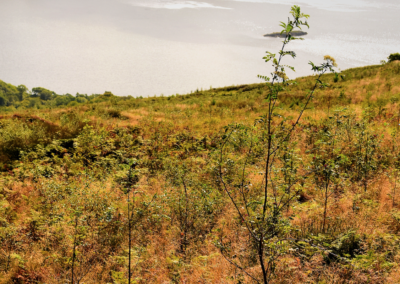REWILDING
“We will showcase an exemplary effort in ecological restoration for the benefit of all animals, plants, and fungi and of course, mankind.”
Photo: Luisa Dickenmann
Kilchoan Estate, Ecological Restoration
The Kilchoan estate is a cultural and educational enterprise. One of our main focuses is ecological restoration, conservation, and preservation of both the terrestrial and marine habitats for the benefit of the people of Argyll and the world.
Kilchoan Estate, located on the Degnish peninsula, was purchased by the current owner in 2015 with the aim to manage it as a cultural project in conservation and education. Historically much of the land was reflective of the traditional land use practices found in this part of Scotland with extensive upland pasture invaded with bracken, large areas and fragmented patches of semi-natural broadleaved woodland and non-native timber plantation introduced by former owners.
The term rewilding comes from the idea that conservationist should move beyond trying to protect different habitats and species. Rather they should also focus on the rebuilding and restoring of ecosystems that could sustain themselves, led by natural processes & with minimal human interference
At the Kilchoan Estate the term “Rewilding” refers to the ecological restoration with the goal of restoring the area to its original state. Here at Kilchoan Estate a variety of efforts are made to accomplish this goal. Since the purchase of the Estate by the current owner, we have undertaken a variety of restoration, monitoring and conservation projects. Examples of these are woodland creation & non-native species removal, native oyster restoration, and sustainable aquaculture.
The Kilchoan Estate is a small part of a much larger movement aiming to allow nature, space and time to recover and natural processes to re-start after the intensity of human activity that so much of the planet has been subjected to. The estate is not alone with this goal, it is part of a nationwide movement creating a matrix of wildland which act as corridors and connected spaces. With careful consideration, observation and through collaboration with multiple organisations, the actions of the Kilchoan team will manage and enrich this beautiful part of Scotland. We will show case an exemplary effort in ecological restoration for the benefit of all animals, plants, fungi and of course mankind.
Photo: Kilchoan Estate
RESTORATION & CONSERVATION PROJECTS
Kilchoan Native Oyster Restoration Project
The Native oyster (Ostrea edulis) is distinct from the commonly sold and non-native pacific oyster (Crassostrea gigas). The much slower growing native oyster has a rounder shell and is less tolerant of environmental variation than the robust pacific oyster. Until the beginning of the 19th century native oysters played an important role as a common food source for both the rich and the poor. They were commonly found around the coast of Scotland. However, in the later part of the 20th century around 90% of the oyster stocks had been depleted due to overharvesting, diseases and a decrease in suitable habitat and water quality. As well as being a food source, oysters provide a variety of environmental services in the Scottish marine habitats. They act as ecosystem engineers; creating reefs, filtering water and storing carbon as well as providing a food source for other wildlife. An adult native oyster can filter up to 240 litres of seawater in a single day. They store carbon in a three-dimensional structure on the seabed called oyster reefs which act as a nursery and spawning ground for a variety of marine organisms all whilst depositing carbon & nutrients onto the seabed in their faeces.
Photo: Kilchoan Estate
Woodland creation projects
The Kilchoan Initiative has been undertaking the restoration of native woodland which once covered a significant portion of the Estate. The woodland creation areas are divided into 4 main compartments, all enclosed within the protection of 12km of deer fencing. A total of 124 000 native trees, covering two distinct woodland types. Oak & birch communities have been planted replicating the surviving woodland. Other species commonly found here such as hazel, alder, rowan and willow are included to benefit this fragile and fragmented habitat.
Restoration and care of the existing woodland extends to relieving grazing pressure and the removal of non-native and invasive species. In addition to woodland creation, we carefully manage the remaining semi-natural ancient Atlantic rainforest which can still be found in some areas of the estate. As with all conscious land stewardship our work is carried out with careful consideration, aftercare, and in-depth monitoring.
Photo: Lauren Smith
Flapper skate survey
Dipturus intermedius is the largest of all European skates and rays (Superorder: Batoidea). It is an elasmobranch, meaning that, like sharks, they have cartilaginous skeletons. They predate on benthic species including crustaceans, teleost fish and smaller elasmobranchs as well as some pelagic prey. Females are larger than the males and can reach up to 3m in total length and over 2m from wingtip to wingtip. They are classified as Critically Endangered by the IUCN (International Union for Conservation of Nature) Red List of Threatened Species.
Historically this species was known as the ‘common skate’, but this comprised two different species, the flapper and the blue skate (Dipturus flossada). Both have been described as extinct in large parts of their range following a long period of exploitation by fisheries; this coupled with the fact that individuals can take up to 10 years to reach maturity and produce offspring, means that populations will be slow to recover from negative impacts.
Both species are found in coastal waters of the European continental shelf and slopes in the north east Atlantic, more specifically the smaller blue skate is found around Rockall and in the Celtic Sea where its range overlaps with the flapper skate. Flappers are found in higher numbers in the northern North Sea and the West Coast of Scotland, although there are the occasional reports of adults being sighted off the Northeast coast of Scotland too.
Flappers, like all skates, reproduce by laying egg cases. Recent observations indicate that females select small boulder covered habitats in relatively shallow waters to deposit their egg cases. The egg cases themselves are reasonably tough and can be seen in clusters slotted in between these small boulders. If undisturbed, they remain here for more than 17 months before hatching.
Photo: Lauren Smith
Loch Melfort Egg-laying Site
The site at Loch Melfort is a unique site, being one of only three known ‘flapperies’ around the Scottish mainland. Flapper skate egg cases were first reported here in 2016, although unofficially, reports from more than a decade ago are known. To the best of our knowledge this location has been used ever since by females as an egg-laying site. Due to its relatively small size, it affords a unique manageable opportunity to monitor and observe how this habitat is used.
Currently nothing is known about how female skates use these sites. It isn’t known how many eggs a female can lay in a season, when she lays them, if she returns to the same site to lay many times over that season, or even over many seasons. Since February 2022 Kilchoan Estate in collaboration with SSC (Shark and Skate Scotland) have conducted monthly surveys. Where two divers monitor the site for freshly laid purse and collect DNA material in order to get a better understanding of how the site is used.

